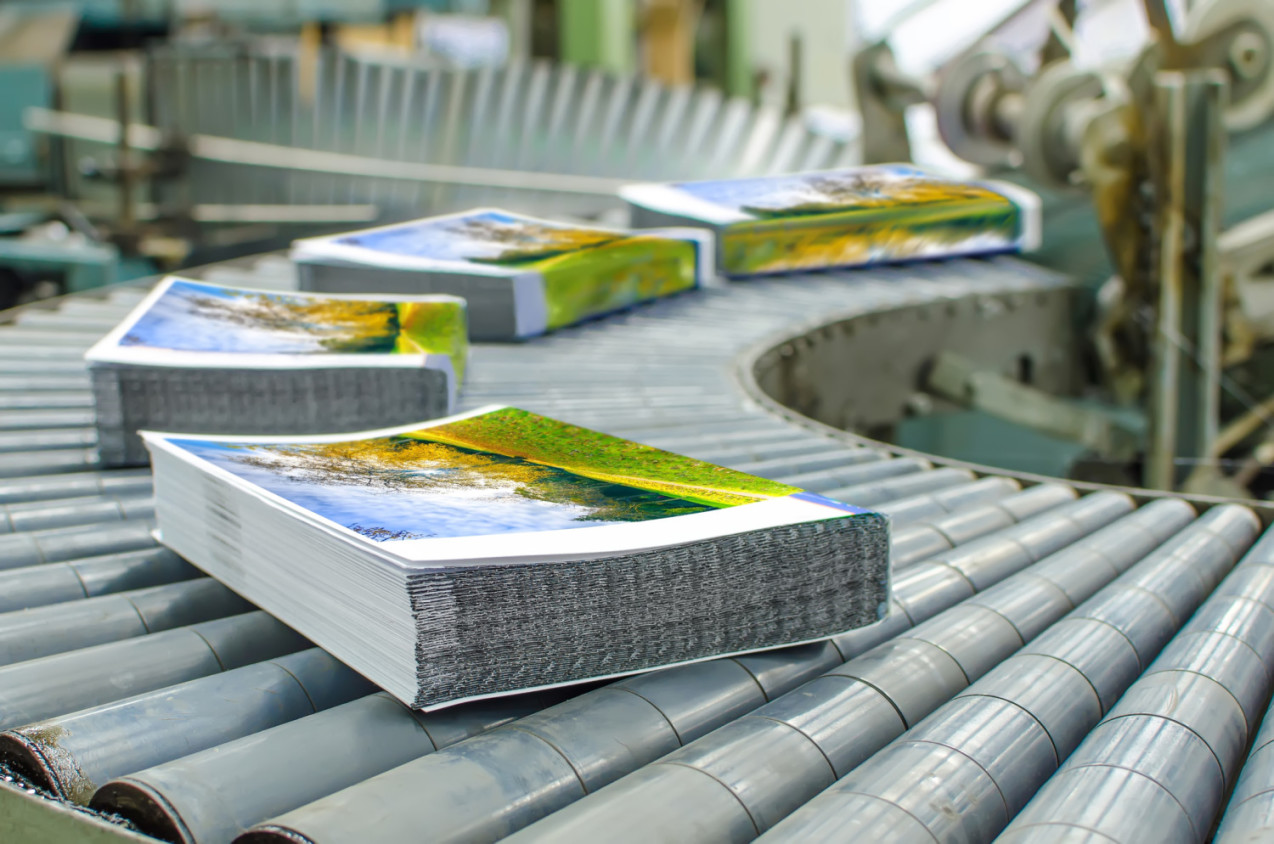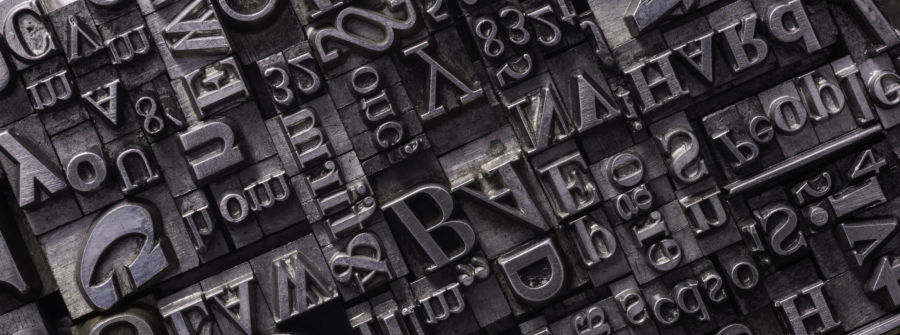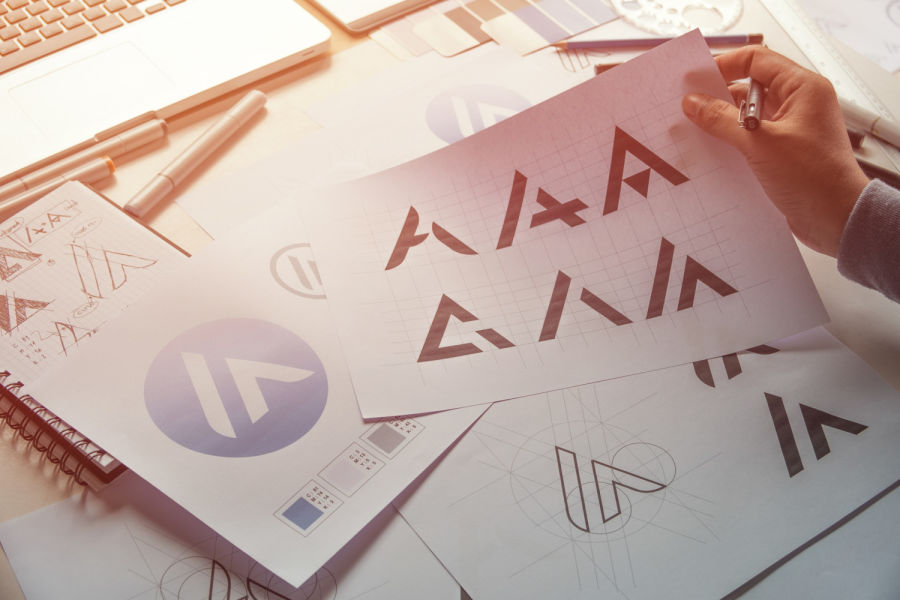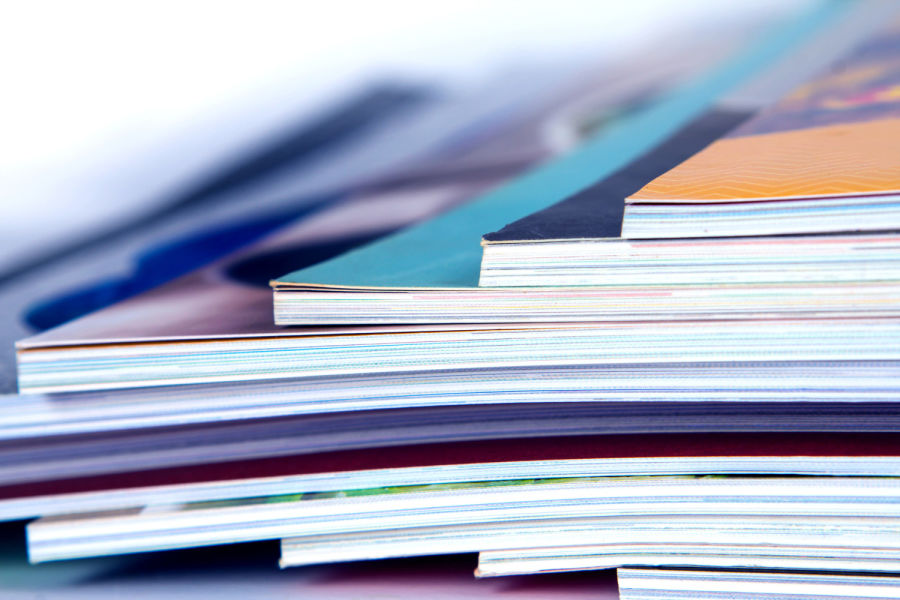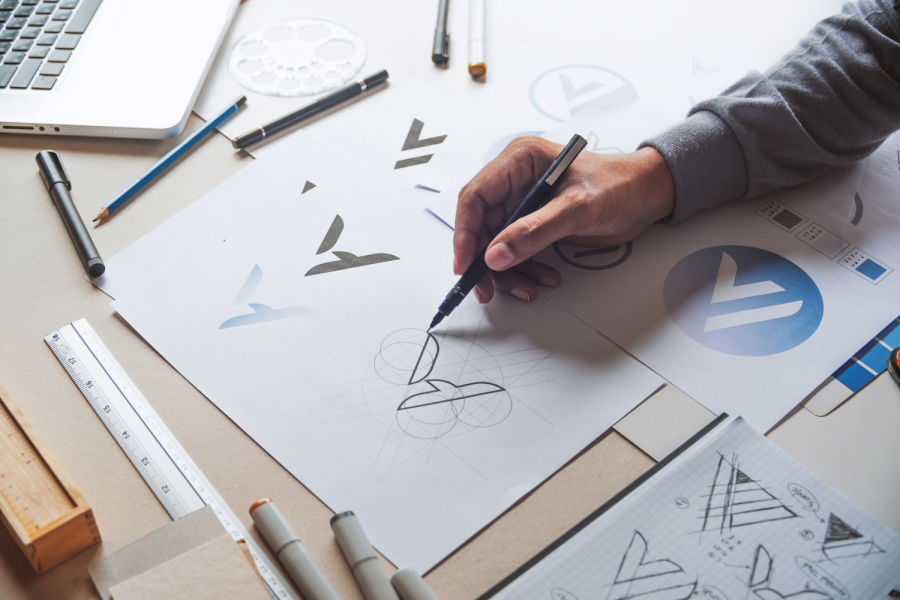//
Oct 18, 2017
How to Pick the Best Marketing Print Material Binding
From fonts to colors, from printed size to paper selection, designing printed marketing materials takes time.
There are several factors that help create the final product. One of the final steps is choosing how to bind your printed project. The way your document is held together can make or break the overall look of the finished product.
There are several print material binding options that vary in look, price and features. Ultimately, the right choice depends on the intended use of your project. To help you select the perfect material to bind your project, we’ve broken down the six most common binding techniques.
SPIRAL BINDING
Spiral binding consists of three different types of binding. Each binds your project together by punching holes or slits into the binding edge of each page and uses plastic or metal combs, coils, or wires to hold them together.
This type of binding is inexpensive and can often be done in-house by printers or even individual small businesses. It is most popular when the desired effect is to have the print lay flat while open. Spiral binding is great for manuals, cookbooks, and notebooks. The three spiral binding techniques are:
- Comb: This style makes for easiest removal and addition of pages after the book has been printed and bound. This is useful for documents that may need to be updated after the initial printing.
- Coil: Unlike comb binding, this process binds a single piece of pre-coiled plastic through small holes in the book’s spine. This technique is the most economical and durable for documents being used repeatedly.
- Twin Loop Wire: “C”-shaped wires offer all the benefits of coil binding, but with a more elegant look and feel. Although, if any of the loops get bent, it can make turning pages difficult.
SADDLESTITCH
Saddlestitch binding is the least expensive print material binding technique, in which loose pages are secured with staples. Pages are placed one inside the other and stapled along the center fold. The inside pages are then trimmed narrower to avoid overlapping the cover pages.
Although this technique is highly cost-efficient, it is limited by the thickness of your printed project. For best results, keep projects under ¼ inch. For larger projects, it is best to use different binding materials.
PERFECT BINDING
Perfect binding places individual pages one on top of the other and secures them with a glue. The cover is then wrapped around the pages and secured with another glue adhesive. Inside pages are then trimmed, like the saddlestitch binding ( gives a full comparison of the two).
Perfect binding is most commonly used for:
- Catalogs
- Directories
- Paperback books
- Projects with high page counts
This technique is visually appealing and creates a professional, clean look. It works best for projects with a higher page count and allows for printing along the spine. However, this type of binding does not lay flat when open, and it does have limitations on thickness. For a printed spine, the minimum thickness is ⅛ inch, and for a non-printed spine, the minimum is 1/16 inch. The maximum thickness for a perfect binding is 2 ¼ inches.
LAYFLAT (OTABIND) BINDING
Layflat binding is very similar to perfect binding. The biggest difference is that layflat allows your printed material to lay flat when opening. Internal pages are glued together in the same way as a perfect binding, but they are not glued to the cover. Instead a allows the project to lay open while on a flat surface.
This binding technique is best for materials that you want to have the look and feel of a perfect bind but also need to lay flat and require hands-free reading.
RELATED:
THERMAL BINDING
Thermal binding is similar to perfect and layflat bindings. Strips of adhesive plastic or cloth are placed around the edges of paper, and a thermal binding machine applies heat to fuse the strips and secure the pages. This technique allows the printed material to lay flat and creates a professional appearance. Pages can easily be added or removed by reheating the cover and then resealing it.
VELO BINDING (STRIP BINDING)
Velo binding is a binding technique in which small holes are punched into the printed book’s binding edge. A plastic strip with tines is put through the holes and covered with another plastic strip with corresponding holes. The excess tines are cut, and the ends are melted to secure the pages together.
This technique creates a sophisticated, professional look and can bind documents up to 3 inches in thickness. Velo binds are generally less durable than spiral or coil binds, and they are most commonly used for one-time-use projects or regulatory purposes, such as:
- Legal briefs
- Transcripts
- Financial reports
Overall, selecting the best print material binding for your your printed project starts with understanding your design. Remember to consider how your consumers will use this product. Does it need to be durable? Will it need to lay flat?
Everything from hand-tied ribbons threaded through hole-punched pages for a sophisticated finish to heavy-duty metal rivets to convey an industrial look are available to set your printed collateral apart from the crowd. Remember, smart design takes into consideration functionality as well as aesthetic appeal of any given project—right down to the binding.

